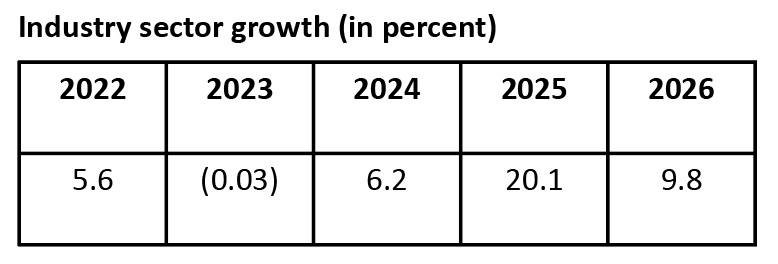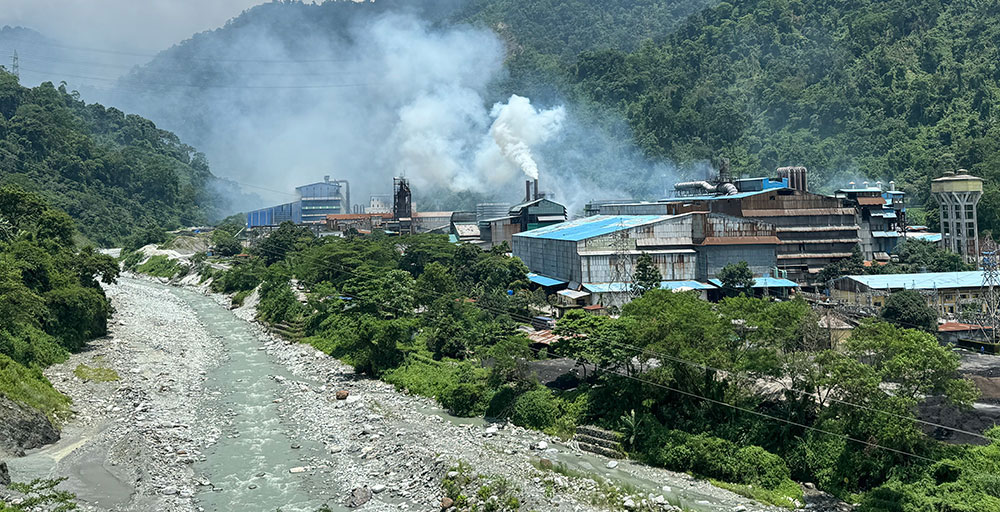Thukten Zangpo
The industry sector’s growth rate is estimated at 9.9 percent in the 13th Plan, which is lower by 0.3 percent than the growth of 10.2 percent required to achieve a country’s gross domestic product (GDP) size of USD 5 billion by 2029, according to the finance ministry.
The sector’s growth was projected to grow to 6.2 percent in 2024 and to increase to 20.1 percent this year with the anticipated commissioning of the Puna-II hydropower plant.
By 2026, the growth is projected at 9.8 percent.
Under the sector, mining and quarrying was estimated to grow at 7 percent in 2024 and to increase to 14 percent this year. The ministry said that this was within the targeted growth rate.
However, the manufacturing sector is expected to grow from 2 percent to 4.6 percent this year.
The ministry highlighted the need for more focused interventions to improve the level of production within the economy mainly to provide gainful employment to the youth.
The government has set an ambitious target to increase the manufacturing sector’s share of GDP from Nu 24.61 billion in 2023 to Nu 43.59 billion by 2029, with an average growth rate of 10 percent.
Manufacturing sector’s share of GDP is expected to increase from 6.73 percent in 2022 to 30 percent by 2029.

The manufacturing sector’s share in GDP has been declining over the years. The sector’s share in GDP declined from 8.93 percent or Nu 6.32 billion in 2010 to 6.73 percent or Nu 19.88 billion in 2022.
The sector’s share in GDP, which was 9.06 percent in 2012, saw a decrease to 7.51 percent in 2017 and 5.86 percent, or Nu 11 billion in 2021.
Industries of all sizes—cottage, small, medium, and large—contributed 49.96 percent, or Nu 124.69 billion, to Bhutan’s GDP in 2023.
Among the industries, 46 percent or Nu 114.81 billion, was contributed by the medium and large industries; Nu 9.88 billion or 3.96 percent was contributed by the cottage and small industries.
The ministry has also revised the electricity growth for last year to 2.9 percent from the previous quarter estimate of 5.6 percent because of delays in Puna-II commissioning.
However, the electricity growth is estimated at 19.8 percent this year.
The construction sector is projected to exhibit a strong growth in the 13th Plan because of the significant size of government investment and construction of small hydropower projects and new hydropower projects aimed at enhancing and realising the country’s hydropower potential.
Considering the current delayed spending trend, the ministry said that such estimates might also be deemed optimistic.
Achieving the growth outlined in the 13th Plan will require the government to address key challenges confronting the industry sector, particularly access to market, access to finance, and skilled labour shortages, among others.
In the medium term, the economy is expected to grow at an average of seven percent, which falls short of the targeted growth rate of eight percent, needed to achieve the vision of a high-income economy in the 13th Plan.
The economy was projected at five percent in 2024 and 9.3 percent this year.


